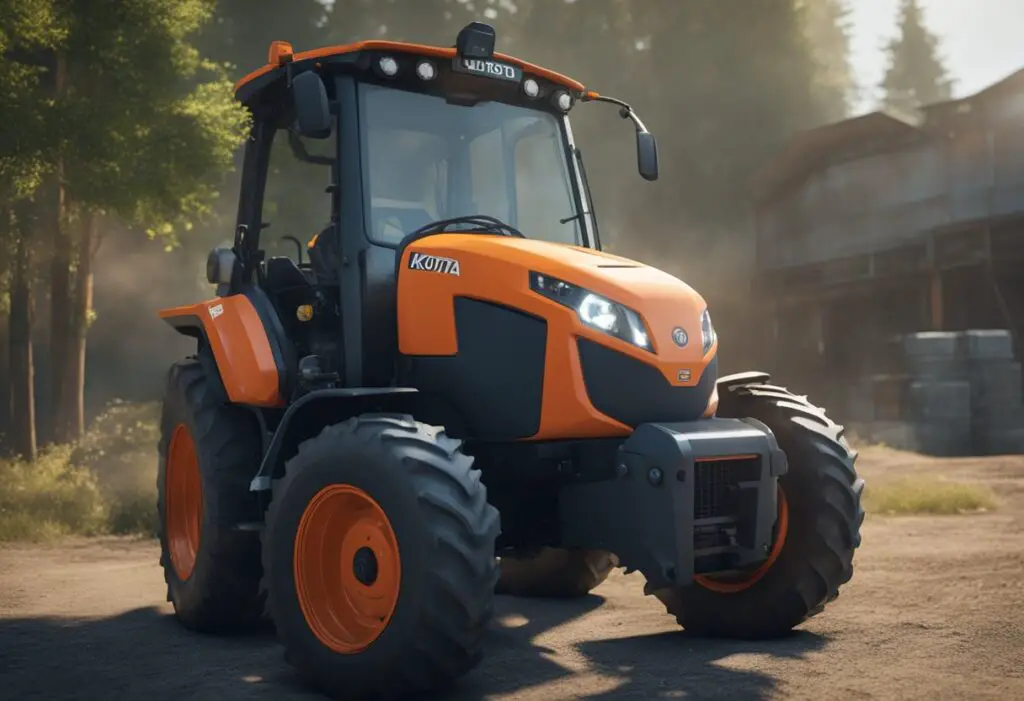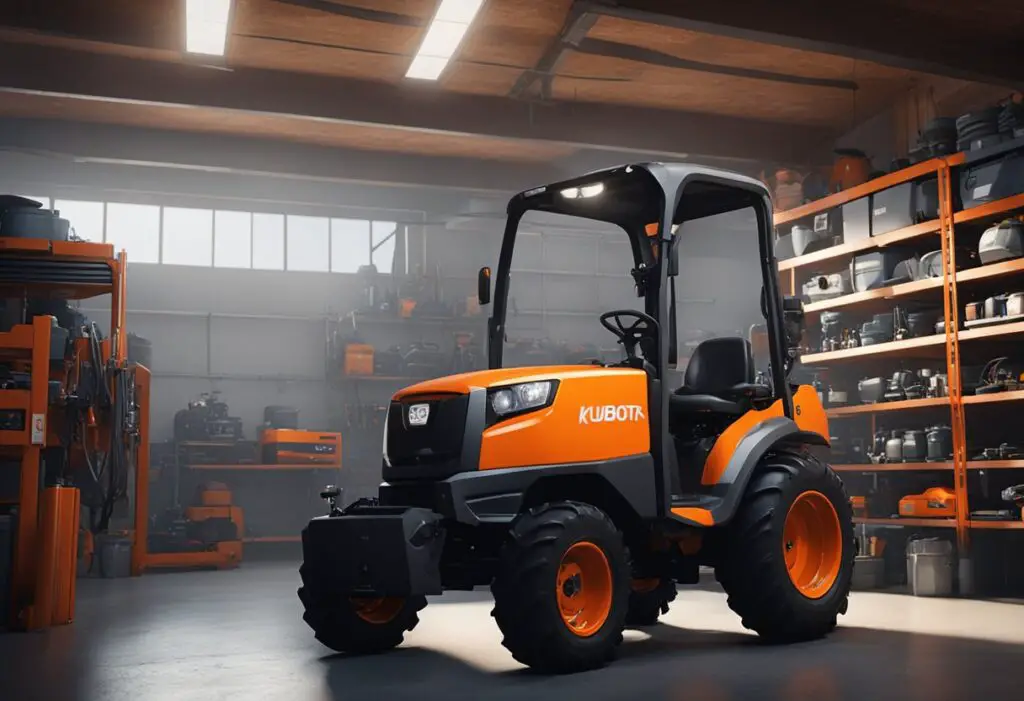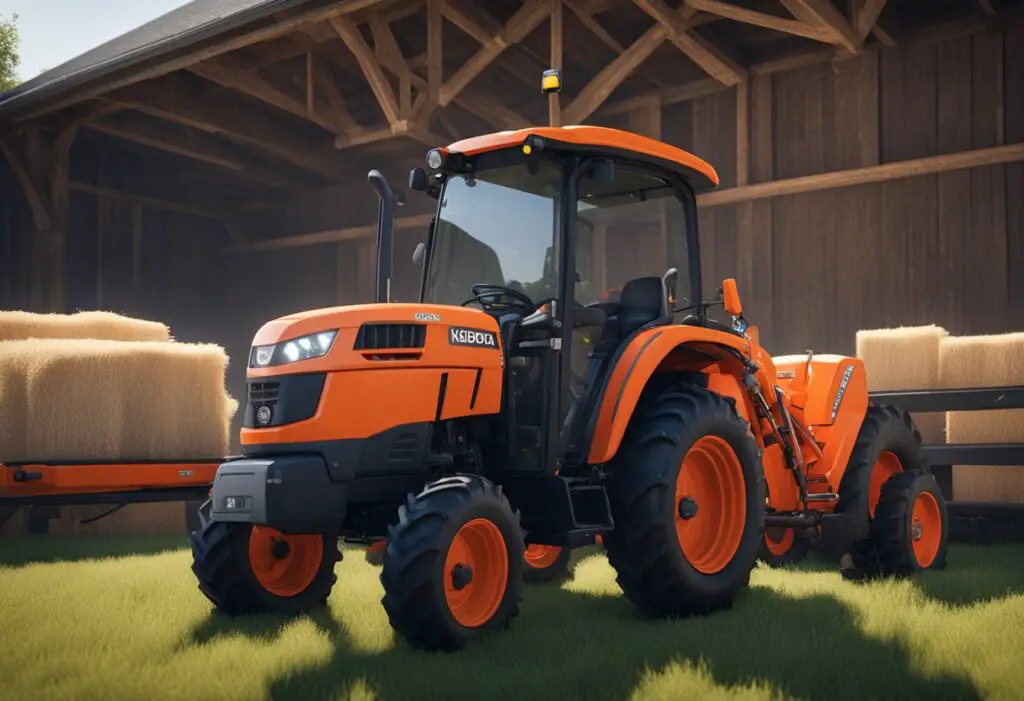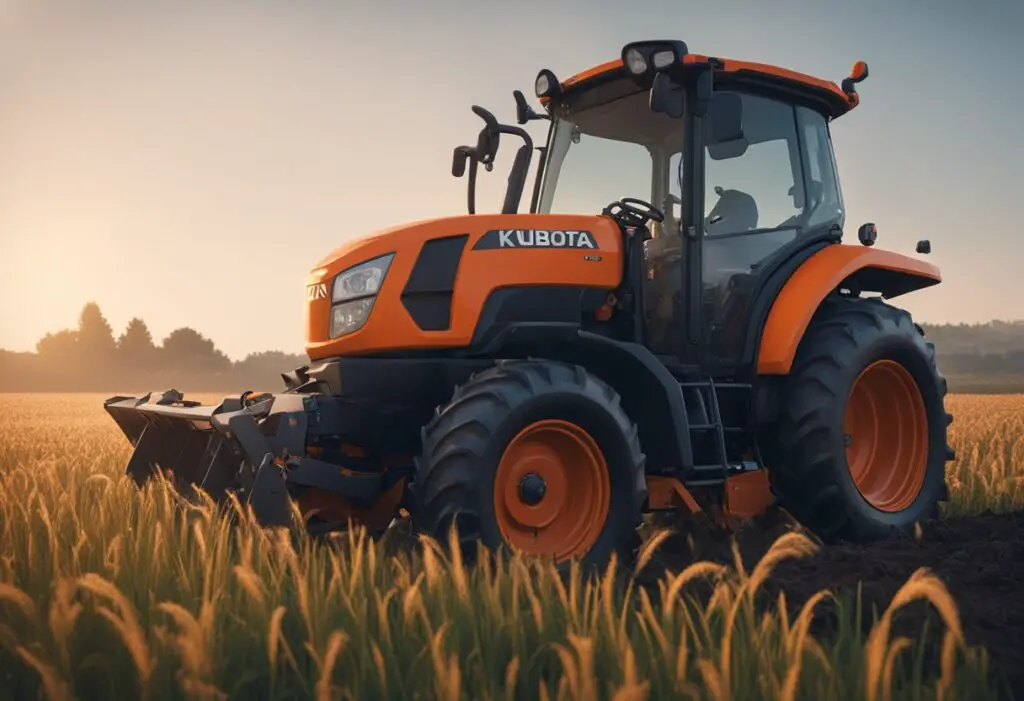The Kubota BX1880 is a versatile and compact tractor, well-regarded for its reliability and utility in various small-scale farming, landscaping, and gardening tasks. Like any mechanical equipment, however, it can encounter problems that may affect its performance. Common issues that owners have reported include overheating, especially with the transmission; difficulties with the hydraulic system; and occasional stalling or issues with oil pressure. Being aware of these problems is the first step toward ensuring your tractor operates smoothly for years to come.

Understanding how to identify and address these issues promptly can save you time and reduce the risk of more serious damage to your tractor. While some problems can be easily fixed with basic maintenance knowledge, others may call for professional repairs. It’s crucial to follow operational best practices and adhere to a regular maintenance schedule to prevent common issues and prolong the life of your tractor.
Key Takeaways
- Recognizing common issues with the BX1880 can help prevent serious damage.
- Prompt troubleshooting and repair can mitigate the risks of tractor downtime.
- Regular maintenance ensures lasting tractor performance and reliability.
Common Kubota BX1880 Problems
Your Kubota BX1880 is a robust machine, but like all mechanical devices, it may encounter some issues. Understanding common problems helps you keep your tractor running efficiently.
Starting Issues
- Hard starting: If your engine is difficult to start, ensure you allow it to warm up and check the fuel tank is filled with clean diesel. A faulty fuel filter replacement may also be necessary.
- Battery issues: Should the battery fail to charge, inspect the alternator belt and voltage output to ensure proper charging.
Fuel System Faults
- Contaminated fuel: Keep your fuel clean to avoid clogging the fuel line or the fuel injector pump.
- Fuel pump problems: A malfunctioning fuel pump could result in poor engine start-up and performance.
Overheating Challenges
- Engine overheating: To address overheating in the engine, verify the radiator is not obstructed and that there’s sufficient coolant.
- Transmission overheating: Check the transmission fluid level and condition to prevent overheating which can lead to power loss and damage.
Air Filtration Issues
- Clogged air filter: Maintain a clean air filter to prevent air circulation problems that can lead to reduced engine efficiency.
Oil and Pressure Concerns
- Leaks: Examine your BX1880 for any oil leaks which could result in low oil pressure and potential engine damage.
- Low oil pressure: Regularly check the engine oil levels to guard against oil pressure issues.
Hydraulics and Transmission
- Hydraulic issues: Issues like spool valve problems or hydraulic pump failure can be traced to the hydraulic fluid filter or main relief valve.
- Transmission faults: Keep an eye on your hydrostatic transmission and check for any transmission fluid leakage or worn transmission parts.
Tire and Tread Matters
- Debris: Regular cleaning of debris from tires is important to maintain the tread and overall tire health.
Electrical System Complications
- Charging system: If your battery cannot be charged, the alternator belt and voltage regulator should be examined for operational integrity.
PTO and Attachment Difficulties
- PTO challenges: Ensure the PTO is properly engaged and that all attachments are correctly connected for optimal performance.
Maintenance Tips

To keep your Kubota BX1880 running smoothly, a consistent maintenance routine is essential. Regular checks and timely part replacements will help you avoid common problems.
Regular Maintenance Checks
Every week, take some time to examine your machine. Check your oil level, looking at the color and consistency for any signs of contamination. Inspect the belts and hoses for cracks or wear that could lead to failures. Maintaining a checklist can help ensure you don’t miss any critical points.
Fluid Level Management
Keep an eye on the various fluid levels in your machine:
- Engine oil: Ensure it’s at the correct level and top it off if needed.
- Transmission fluid: Look for proper levels and signs of overheating. If the fluid is below the recommended level or appears burnt, it could signal internal damage.
- Hydraulic fluid: Like transmission fluid, it’s important to maintain the right amount of hydraulic fluid, as it directly affects your machine’s operation.
Filter Maintenance
Your Kubota BX1880’s performance is highly dependent on clean filters:
- Air filter: Check and clean it regularly. Replace it if it’s damaged or excessively dirty.
- Fuel filter: A clogged fuel filter can cause starting issues or poor engine performance. Replace it according to the manufacturer’s recommendations.
- Hydraulic fluid filter: Keep this clean to ensure the hydraulic system is free from contaminants.
Seal and Hose Inspections
Over time, the seals and hoses on your machine can deteriorate:
- Regularly inspect for leaks or cracks.
- Ensure that connections are tight and seals are intact to prevent fluid loss or contamination.
By following these maintenance tips, you can help extend the life of your Kubota BX1880 and ensure it operates efficiently. Remember, taking care of your machine today can save you from more significant problems tomorrow.
Troubleshooting Guide
In this section, you’ll learn how to diagnose common issues with your Kubota BX1880, make informed decisions about repairs and replacements, and recognize the early warning signs of potential problems.
Problem Diagnosis
When you face issues with your Kubota BX1880, start by identifying symptoms before attempting repairs. If your engine stalls or is hard to start, check the fuel supply and electrical connections. For engine overheating, inspect the cooling system, including the radiator hoses and clamps. When troubleshooting, always refer to your tractor’s manual for specific diagnostic procedures.
| Symptom | Potential Cause | Quick Check |
|---|---|---|
| Engine Stall | Faulty fuel injector pump | Check for fault codes |
| Hard to Start | Clogged fuel filter | Inspect and clean the filter |
| Overheats | Blocked radiator | Ensure the radiator is clear of debris |
Repair or Replace Decisions
Once you’ve diagnosed the problem, you’ll need to decide whether to repair parts or replace them. If the issue is with common wear parts like fuel filters or hose clamps, replacement might be the more reliable and cost-effective solution. For more complex components like the fuel injector pump, consider the costs of repairs versus replacement. Remember to check the warranty specifics for covered parts.
- Always replace:
- Damaged hoses
- Worn clamps
- Consider repair if:
- Parts are under warranty
- The cost is significantly lower than replacement
Understanding Warning Signs
Being familiar with your tractor’s warning signs can prevent sudden breakdowns. If you notice irregular engine noises, power loss, or excessive smoke, take immediate action to troubleshoot these symptoms. Regular maintenance checks can prevent these issues from arising. Be proactive by routinely checking:
- Fuel levels and cleanliness
- Cooling system fluid levels
- Clarity of hoses and connections
| Warning Sign | Probable Action |
|---|---|
| Loss of Power | Check fuel system and filters |
| Excessive Smoke | Inspect the engine for oil leaks or damage |
| Frequent Engine Stall | Service the injector pump and electrical systems |
Remember to consult your operator’s manual or a professional technician when in doubt about troubleshooting steps or repairs.
Operational Best Practices

When using your Kubota BX1880, whether for landscaping or property maintenance, following operational best practices ensures the longevity and efficiency of your machine. These practices provide a roadmap for optimal machine utilization.
Optimal Machine Utilization
Your Kubota BX1880 is an asset that, when used thoughtfully, can serve you well for various small-scale agricultural and landscaping projects. To get the most out of this sub-compact tractor:
Familiarize Yourself With the Manual: Always start by reading the tractor’s operator manual. This will give you vital information on the capabilities and limitations of your BX1880.
Regular Maintenance Checks: Before each use, perform a quick maintenance check:
- Check oil levels and quality.
- Inspect fuel levels and look for contamination.
- Ensure hydraulic systems are at the right pressure and free of leaks.
Operational Parameters: Adhere to recommended weight limits and operational guidelines:
- Do not exceed the loader’s lifting capacity.
- Operate at speeds suitable for the task and terrain.
Proper Storage: When not in use, store your BX1880 in a dry, covered area to protect it from the elements and extend its service life.
By following these guidelines, you’ll be paving the way for your Kubota BX1880 to operate at its best, providing reliable service for all your landscaping and property maintenance needs.
Frequently Asked Questions

In owning a Kubota BX1880, you may encounter a series of common issues that can impact its performance. The following FAQs address typical maintenance, troubleshooting, and fixes to help keep your tractor running smoothly.
What are the typical maintenance issues faced by Kubota BX1880 owners?
Regular maintenance for your Kubota BX1880 often involves oil changes every 50 hours of use and ensuring the use of high-quality diesel fuel to prolong engine life. Checking and cleaning air filters, as well as keeping the radiator clear, are also essential tasks.
How do users resolve hydraulic system complications in the Kubota BX1880?
Hydraulic issues can be managed by checking the hydraulic fluid level regularly and replacing it as needed. If you experience slow operation or leaky cylinders, it may be time to inspect the seals and fittings for wear or damage and replace them if necessary.
Can you list the electrical issues that might occur with a Kubota BX1880 tractor?
Electrical problems in the BX1880 might include issues with the battery, starter, or alternator. If your tractor fails to start, first check the battery’s charge and connections. If the battery is fine, test the starter and alternator, as they might require servicing or replacement.
What solutions are available for PTO problems on a Kubota BX1880?
For PTO (Power Take-Off) troubles, ensure that the PTO shaft is correctly engaged and that there are no obstructions. If there are issues with PTO engagement, consult your manual for linkage adjustment procedures, or it could indicate a need for a more in-depth mechanical inspection.
How do operators deal with overheating issues in the Kubota BX1880?
To tackle overheating, first check the radiator for debris. A clean radiator promotes efficient airflow which is critical for cooling. Also ensure coolant levels are adequate, and if the engine still runs hot, inspect the thermostat or water pump for potential faults.
Are there any common transmission problems seen in the Kubota BX1880, and how can they be addressed?
Transmission overheating usually calls for a check on the transmission fluid level and condition. If fluid levels are low or the fluid is dirty, replenish or change it as needed. Persistent overheating may indicate internal damage, necessitating professional inspection and possible repair.

Leave a Reply